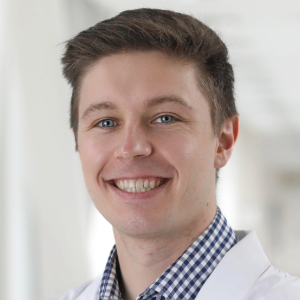
November 2025 Newsletter

November 2025 Newsletter

Student Profile
Noah Forrest is a student in the Medical Scientist Training Program (MSTP). He became intrigued by research while at the University of Portland, and Forrest came to Feinberg to study clinical patterns of disease.
Now in the laboratory of Theresa Walunas, PhD, associate professor of Medicine, Forrest investigates lean muscle loss in the setting of a chronic disease and how it impacts patient outcomes.
Where is your hometown?
Portland, Oregon
What sparked your interest in science or medicine?
I was initially drawn to research I did at the University of Portland. I was involved in synthesizing antimalarial compounds that, in principle, would only need to be dosed once because they had a longer biological half-life than current available options. This addressed a need for many patients living in areas where malaria is endemic, as it could potentially preclude the need for multiple clinic visits. While this project got me interested in being in the lab, I was more motivated to study the clinical patterns of disease that resulted in care gaps like these, which led me to my dissertation project at Northwestern.
What are your research interests?
My research interests center on cachexia, which is defined by lean muscle loss in the setting of a chronic disease. In my case, I focus on patients with various types of cancers in which cachexia is common. I’m especially interested in cachexia's heterogeneity in real human patient populations and how we currently classify and diagnose it in the clinic. I’m also drawn to leveraging electronic health records and machine learning to identify sub-phenotypes of cachexia, track how the condition progresses over time, and improve prognostic outcomes.
What are you currently working on?
Right now, I’m working on applying machine learning methods to large electronic health record datasets. The goal is to better characterize sub-phenotypes of cancer-associated cachexia and understand their longitudinal trajectories.
Please tell us about a defining moment in your education at Feinberg thus far.
The moment that changed my research trajectory the most at Feinberg was when my boss, Theresa Walunas, became part of an interdisciplinary team of researchers in the basic sciences as well as population health investigators like myself. This team introduced me to the interesting topic of cachexia in cancer which eventually became the focus of my dissertation. Without my introduction to this team, I likely would never have found this topic.
What do you hope to do with your degree?
I hope to combine clinical care with research, especially in the area of cancer-associated cachexia. My goal is to develop more precise, patient-centered approaches that improve both prognostic accuracy and quality of life for patients.